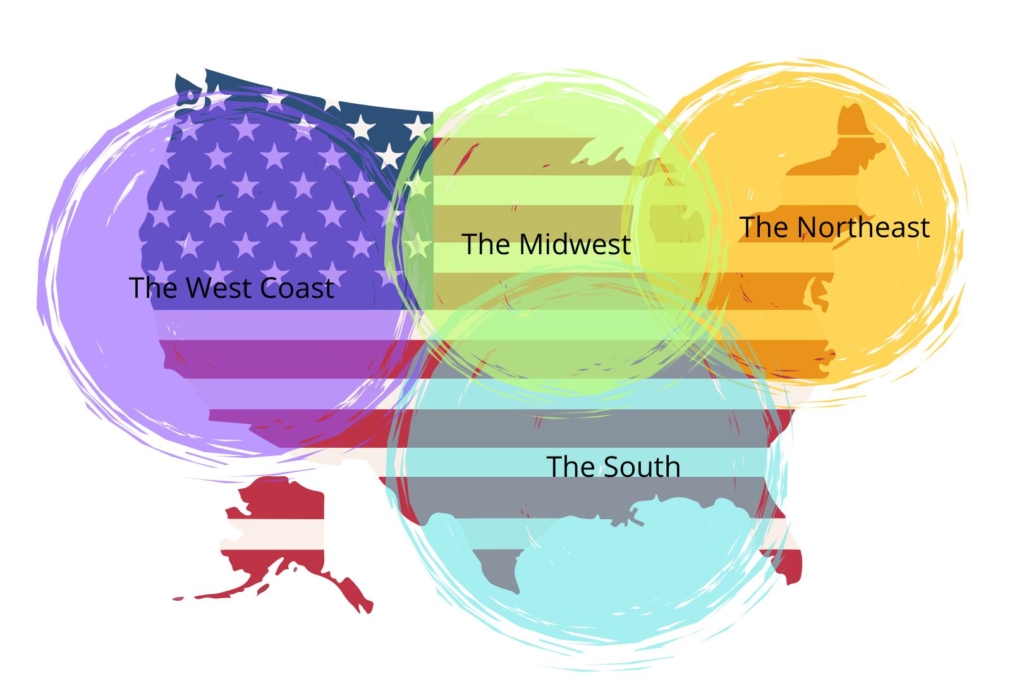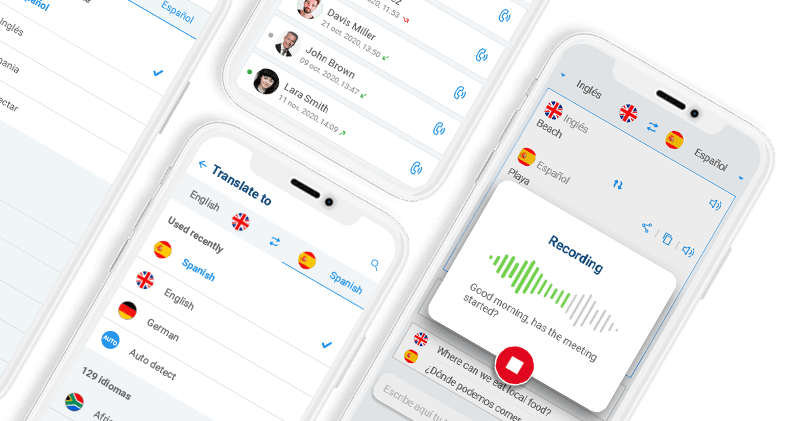
If you want to master a second language, learning English in the United States is one of the most popular choices. The country offers countless academies, universities, and language centers, giving you hundreds of cities to choose from as your learning destination. And that’s exactly where the challenge begins: helping you navigate the overwhelming number of options to find the best place to learn English in the U.S.
As you’ve probably noticed, having too many choices doesn’t always make things easier. In fact, it can make the decision even more complicated. That’s why we’re here—to simplify the process and give you key insights to help you choose where and how to learn English in the United States. By the end of this guide, you’ll have a clearer perspective and be able to make the best decision to maximize your learning experience.
Let’s dive into how to choose the right academy, city, and everything else you need to study English in the United States.
But first…
Why learn English in the United States?
The United States is one of the most diverse countries in the world, not only in terms of cultures, backgrounds, and nationalities but also in its global influence. American culture has reached every corner of the planet through movies, music, and art. Whether or not you feel connected to the country, you’ve probably watched thousands of American films, listened to U.S. artists, or learned more about the country than you realize.
Because of this widespread cultural impact, learning English in the United States has become a top choice for students worldwide. People from Latin America, Europe, Asia, and beyond travel to the United States to master the language. In response to this demand, a vast network of English academies and institutions has been established throughout the country.
Major cities like New York and Chicago host thousands of language centers, but learning English isn’t limited to large urban areas. Smaller cities and towns also offer excellent learning opportunities, each with its own advantages and drawbacks. This leads us to the first big question for anyone considering studying English in the U.S.:
What’s the best city to learn English in the United States?
To keep things simple, the answer is… all of them! There’s no single “perfect” city for learning English—it all depends on your personal preferences and priorities. Let’s break down the pros and cons based on the size of the city:
Pros and cons of studying in a big city
Choosing a major city like Los Angeles, Miami, Boston, or Detroit comes with undeniable benefits, such as:
- Better infrastructure, including public transport, banking, and business services.
- More entertainment options, including nightlife, shopping, and cultural attractions.
- Access to top-tier museums, theaters, and art centers.
- A diverse, multicultural environment, often called a “melting pot” of different backgrounds.
- High-quality language schools, usually located in or near major urban centers.
However, big cities also come with downsides:
- Higher crime rates in some areas.
- Expensive cost of living compared to smaller towns.
- More chaotic and fast-paced lifestyle, which can be overwhelming.
- Higher tuition fees for English courses in urban areas.
Weighing these pros and cons is essential for making the right choice. But what about smaller cities? Let’s explore their advantages and disadvantages:
Pros and cons of studying in a small city
Unlike Canada, Brazil, China, or Russia, where large areas remain uninhabited, almost all of the U.S. is populated. This means there are thousands of small towns and cities across the country. Choosing a smaller town has benefits such as:
- A peaceful, relaxed lifestyle compared to busy urban centers.
- Easier transportation, often without the need for a car.
- Lower cost of living, sometimes significantly cheaper than in big cities.
- More affordable language schools compared to major metropolitan areas.
- However, there are also some drawbacks:
- Smaller towns can feel socially restrictive, making it harder to integrate.
- Fewer entertainment and cultural options than big cities.
- Regional accents may make learning English more challenging.
- Quality of education can vary, depending on the institution.
Now that we’ve compared big cities vs. small towns, another key question arises: Which option is truly best for you?

What’s the best region to learn English in the United States?
When it comes to learning English, it’s impossible to say that one region in the U.S. is better than another. However, it’s important to understand that, just like in your own country, English varies across different parts of the United States. There are regional accents, slang, and expressions that can be easier or harder to understand, depending on your proficiency level.
In very general linguistic terms, we can divide the U.S. into four major regions:
- The Northeast – This region stretches from the Great Lakes to the Maine coast, down to the states of North Carolina and Virginia.
- The South – Typically includes states from South Carolina and Kentucky down to Florida, extending west to Texas and New Mexico.
- The Midwest – Covers a vast area from Oklahoma and Arizona up to Montana and North Dakota.
- The West Coast – Encompasses Oregon, Washington, and California.
Of course, this is a very broad classification, and many people might disagree with it. However, it serves as a simple way to divide such a large and linguistically diverse country into four general regions with similar English variations.
Universities, Colleges, and language schools: Which one should you choose to learn English in the United States?
This is one of the first questions that arises when researching options to learn English in the United States. A quick online search will return thousands of results, making it difficult to decide which option offers the best quality, price, and learning experience. Let’s break down your choices:
University English programs
The name of these programs varies by university. You might find them listed as:
- “English as a Second Language (ESL)”
- “English Program for Foreign Students”
- “Intensive English Language Program”
- Or other similar names
Regardless of the title, these programs all have the same goal: teaching English to international students.
Since they are university-sponsored, they offer high academic quality and full immersion in the student experience. In most cases, you’ll attend classes in the same facilities as regular students, and some universities even allow you to live on campus in student residences.
This is a huge advantage because it forces you to interact daily with native English speakers, accelerating your learning process. Additionally, you’ll have full access to university amenities, including libraries, dining halls, gyms, and other facilities.
Main benefits:
- High-quality education backed by universities
- Full immersion in an English-speaking environment
- Access to campus facilities and student life
Main disadvantage:
- The cost. These programs tend to be expensive, often including tuition, housing, meals, and transportation in their pricing packages.
Colleges and Community Colleges: What’s the difference?
For those unfamiliar with the U.S. education system, the difference between a College and a Community College can be confusing. However, when it comes to learning English, both types of institutions offer similar opportunities.
The main difference lies in their academic structure:
- Colleges can be public or private institutions offering specific academic degrees. Unlike universities, which provide undergraduate, graduate, and doctoral programs, Colleges typically grant only Bachelor’s Degrees, with programs lasting up to four years.
- Community Colleges, on the other hand, focus on vocational education. Most programs last up to two years, and graduates receive a technical or professional degree. Additionally, Community Colleges offer trade courses, corporate training programs, and language classes for international students and working professionals.
From a cost perspective, both Colleges and Community Colleges tend to be more affordable than university programs. However, they usually do not include housing, meals, or additional services, which must be arranged separately.
Language schools: Are they a good option?
Language academies in the U.S. function similarly to those in any other country. They provide English lessons but often lack the immersive experience of Colleges or universities.
Pros:
- Flexible schedules
- Wide variety of programs
- More affordable than university courses
Cons:
- Limited class hours
- Quality varies significantly between schools
- Fewer networking opportunities compared to College or university settings
Ultimately, the best learning environment depends on your goals, budget, and preferred level of immersion. Up next, we’ll share key factors to help you choose the best option for learning English in the U.S.
How to choose the best learning center?
Selecting a university, college, or language academy can be a challenging decision—especially if you don’t have a clear system to evaluate your options. Here are some key factors to consider:
Cost
- Universities tend to be the most expensive option, but they usually include housing, meals, student services, and academic advising in their programs.
- Language schools and colleges may have lower tuition fees, but you may need to cover accommodation and other expenses separately.
Location
Unlike in Europe or other regions, the distance between home and school can be a major factor in the U.S.
- Large cities require longer commutes, and some areas have limited public transportation (buses, trains, or subways).
- Depending on the city, you may need a car, which involves extra costs such as fuel, parking, permits, and insurance.
- On-campus housing may seem expensive, but in some cases, it could be the most cost-effective option.
Quality of education
This is one of the most subjective factors. While university programs are generally prestigious, some language academies also provide high-quality education. Consider the following when evaluating your options:
- Institution rankings: In the U.S., almost everything has a ranking—including universities, colleges, and language schools.
- Personal recommendations: If you know friends or relatives who have studied English in the U.S., ask for their advice.
- Online reviews: While not always reliable, reading student reviews and testimonials can help you get a general idea of the institution.
- Forums and discussion groups: Joining online communities for international students can provide valuable insights and experiences.
What do you need to study and live in the U.S.?
Like many countries, the U.S. has strict immigration policies. If you plan to stay for an extended period, entering as a tourist is not the right option.
Even if your country has visa agreements with the U.S., studying English requires a student visa. The F-1 visa is the most common for international students, allowing you to:
- Legally enter the U.S. following immigration regulations.
- Stay longer than a tourist visa allows (usually over 90 to 180 days).
However, the F-1 visa does NOT allow you to:
- Work or engage in any paid economic activities (some exceptions apply on a case-by-case basis).
- Stay beyond the visa expiration date.
- Leave and re-enter the U.S. without proper authorization.
Requirements for the F-1 Student Visa
Visa requirements vary by country of origin, but the most common requirements include:
- Full-time enrollment in an accredited program (university, college, or language school).
- Valid passport (expiration date at least six months after program completion).
- Proof of financial resources to cover tuition and living expenses.
- Completion of DS-160 and I-20 forms (provided by the educational institution).
- Letter of admission from the school or university.
- Student health insurance coverage.
- Proof of accommodation.
- Academic records and transcripts translated into English.
You must schedule an interview at the U.S. embassy or consulate in your country and submit all required documents. An interview with an embassy official is often necessary to finalize the process.

How to optimize your English learning experience in the U.S.?
Telling you to study hard and put in maximum effort might seem obvious. However, we must emphasize it: learning English in the United States—or any language in any country—requires dedication. The good news is that, thanks to technology, learning can now be easier and more effective.
Today, you have powerful tools to help you maximize your learning experience, and most of them are already in your pocket. Yes, that’s right—your smartphone holds everything you need to optimize your English learning journey. Let’s explore how:
Talkao Translation Tools
Talkao translation apps leverage AI-driven and Augmented Reality (AR) translation technologies to enhance language learning. These tools allow you to:
- Translate real-time conversations – Speak with anyone using your phone as a live translator in 125+ languages.
- Translate texts, books, and documents – Convert any written content into English, regardless of length or complexity.
- Translate images – Even if the text is embedded in images or written in different alphabets, Talkao can translate it instantly.
- Translate videos – Watching videos is a valuable resource for language learning, and with Talkao’s video translation tool, it becomes even easier.
These intuitive and user-friendly tools can be downloaded to your smartphone and used anytime, anywhere—fully personalized to your needs.
Your English learning journey starts now!
Learning English in the United States is within your reach—and with the right tools, mindset, and effort, it will be an unforgettable experience!










Newsletter